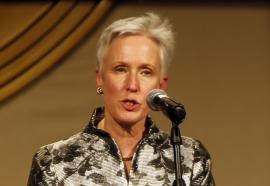Picture Energy: Electricity's Next Generation Debates the Future
Young experts in the Georgetown University class on the energy sector at the Edmund A. Walsh School of Foreign Service debated electric vehicles, battery storage, and the move away from the traditional utility model. PUF’s Pat McMurray was one of the judges at an energy debate on March 30.










